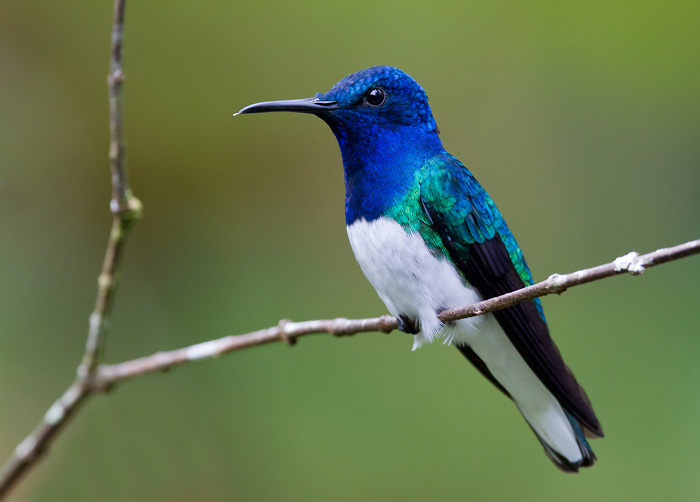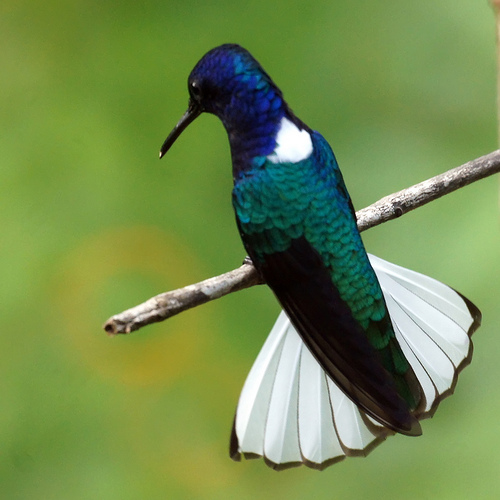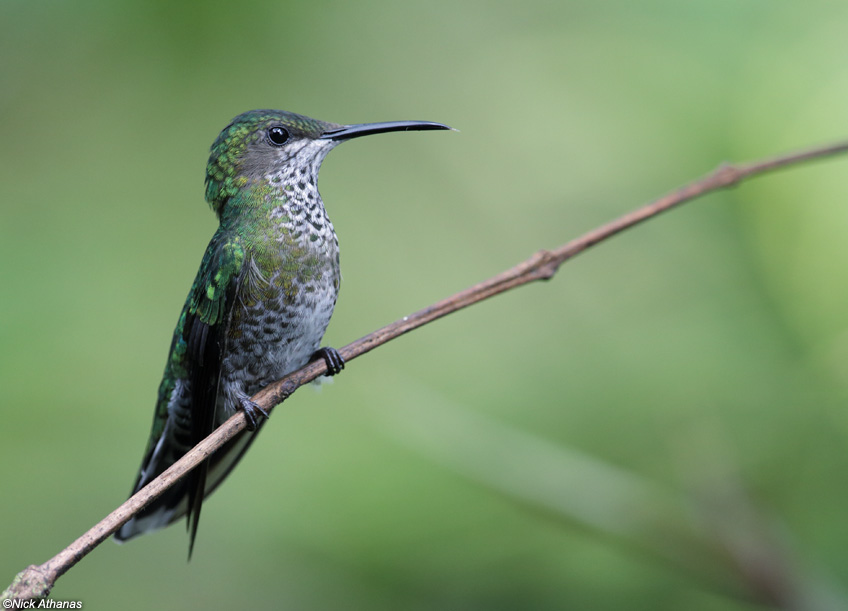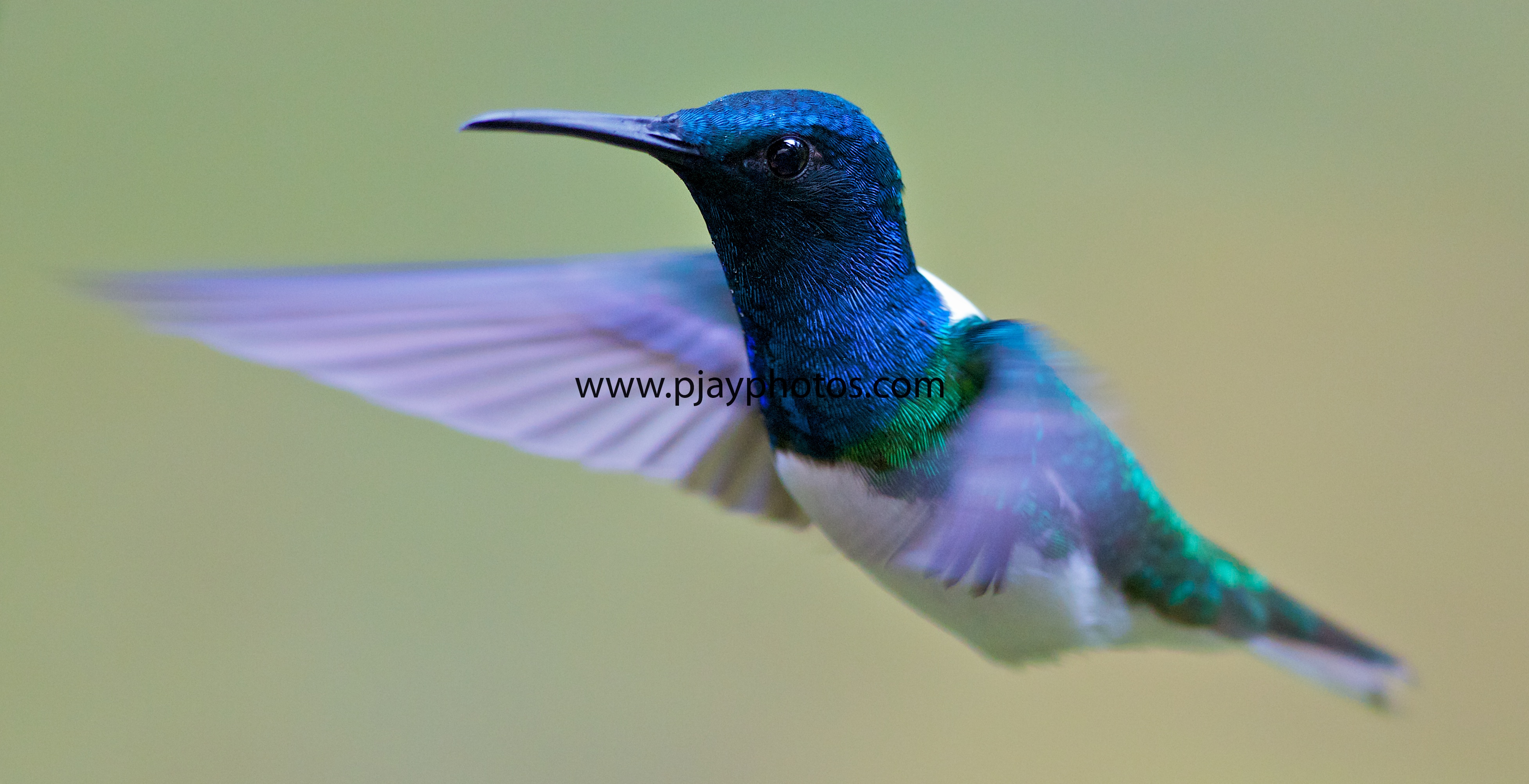
Florisuga mellivora
SUBFAMILY
Trochilinae
TAXONOMY
Trochilus mellivorus Linnaeus, 1758, India; error=Surinam. Two
subspecies recognized.
OTHER COMMON NAMES
English: White-bellied hummingbird; French: Colibri jacobin;
German: Weissnackenkolibri; Spanish: Colibrн Nuquiblanco.
PHYSICAL CHARACTERISTICS
4.3–4.7 in (11–12 cm); female 0.23 oz (6.5 g), male 0.26 oz (7.4
g). Bill and feet black. Adult male with head and chest blue,
broad white crescent on nape, rest of upperparts bright green
including elongated uppertail-coverts; belly and most of tail
white, narrowly edged and tipped black. Plumage of adult female
notoriously variable, apparently individually; half to twothirds
show the typical female plumage with blue-green breast
heavily scaled with whitish, belly dull white, upperparts entirely
green and tail mostly green with dark blue tip, outer rectrix
with white outer edge and tip; the remainder have plumage
more or less male-like with a few only distinguishable from
adult male by their longer bills and shorter wings and tails.
DISTRIBUTION
F. m. mellivora: southern Mexico to Panama and Colombia,
south to west Ecuador, southeast Peru and northern Bolivia,
and east to Venezuela, Trinidad, the Guianas and Amazonian
Brazil. F. m. flabellifera: Tobago.
HABITAT
Humid forest canopy and borders, woodlands, plantations, tall
second growth, and gallery forest. Usually high in trees, lower
at edges and clearings. Occurs from sea-level up to 3,300 ft
(1,000 m).
BEHAVIOR
Territorial. Mostly silent, at times lengthy hard utters. Sometimes
12–15 males gather at flowering trees.
FEEDING ECOLOGY AND DIET
Feeds high in flowering trees, including Inga, Vochysia, Erythrina,
Bauhinia, and Symphonia, epiphytes, shrubs, and Heliconia
along edges and in clearings. Hawks for insects for long periods,
hovering and darting high above streams and clearings or
sallying from tree-top perches.
REPRODUCTIVE BIOLOGY
Breeds during dry to early wet seasons between January and
July in Costa Rica and Panama; between February and May in
northwest Colombia, June and November in east Colombia.
Nest is a rather shallow soft cup of light-colored plant down
and cobweb on flat upper surface of broad leaf of understory
palm (Geonoma, Asterogyne), often sheltered from above by another
such leaf, 3.3–10 ft (1–3 m) above ground, sometimes
near a stream.
CONSERVATION STATUS
Uncommon to common. Adapts to human-made habitats such
as tree plantations.
SIGNIFICANCE TO HUMANS
None known.
Other popular Animals
Photo Gallery of - White-necked jacobin




 Animalia Life
Animalia Life